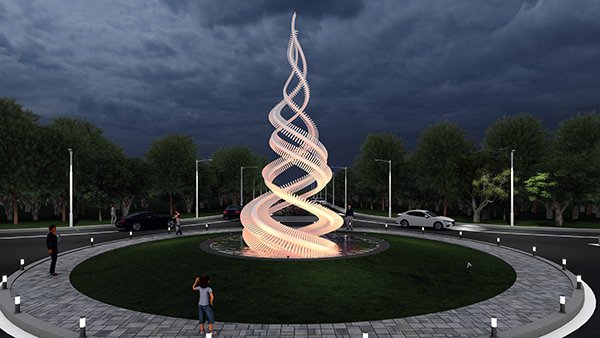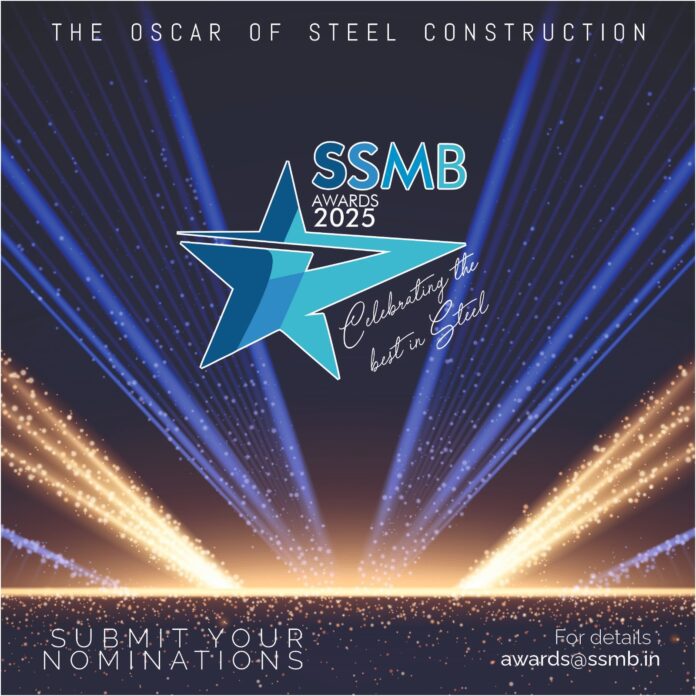Steel possesses one of the greatest virtues of a material that can be combined with other materials, says Amit Sharma, Principal Architect of
What are the major advantages of using steel vis-à-vis conventional materials?
Steel structures allow a lot of flexibility in terms of spans and shapes. They are faster to build and easier to dismantle. They can be prefabricated and therefore the production can be decentralized. Steel structures are also easily expandable and repairable. They are flexible, which makes them very good at resisting dynamic (changing) forces such as wind or earthquakes or other forces of nature. It can bend without cracking, which acts as a warning in seismic zones. Steel can be molded, bent or shaped into any kind of design as well as, can be clad with any type of skin material ranging from clay tiles to carbon composite sheets, etc.
A wide range of joining methods, such as, bolting, welding, and riveting for steel are readily available. Steel can be recycled. New steel made from scrapped steel uses about one-third of the energy necessary for steel from virgin materials, thus also adding environment friendly feature to it.
How structural steel can be innovatively used in construction to provide design aesthetics and at the same time offer economical solution?
Steel works best in tension and therefore the tensile properties should be exploited more. Space frames and tie rod stay structures are some good examples of this system. Most of the designs created in our country are inefficient for a simple reason that steel gets under used for its strength. The compressive strength of steel is often outdone by its slenderness ratio and therefore is often over designed. Hollow sections are efficient since it gives greater section area for lesser material area.
What is your take on the variety of sections/grades provided by our steel producers for various demands of creativity?
The steel producers have a very good variety of steel but are not able to educate the users (architects and engineers) about the efficacy of the material. The industry needs to first utilize the existing variety of sections and grades that are available. One needs to also reduce the price gap between mild steel and stainless steel, the way it has been done for petrol and diesel. This will allow more people to use stainless steel, a product which has a higher cycle value. There is also a need to create skilled workers for this material, as it requires more accuracy to work with; something, the steel producers should think about.

What trend are we going to witness in next 5-7 years, as far as designing structures with steel is concerned?
As speed becomes more and more important, one will see a rise in prefabricated structures. More architects are experimenting with form and therefore there will be a rise in the quality of structures. The future is all about building faster, lighter and stronger. There should be the need and desire to build larger structures as our communities grow. The use of tubular structures will get more popular in public buildings since it is already being used largely at public infrastructure structures like airports and stations.
What should be the strategy of industry in promoting structural steel construction in India?
The industry has to start catching the future of the design industry, (the decision makers) students of architecture and design and teaching them about the material. Most of the curriculum in schools today is Brick and RCC centric. Young architects need to be exposed to the wonders of steel, how it can change the way structured are seen and open up new avenues of creative designs. The industry also needs to promote the material by demonstrating, from time to time, the virtues of the material through exhibitions and funding smaller projects at the city scale like foot over bridges, street furniture etc.
Which are the iconic steel-specific projects executed by you?
We have done cable stay sheds with spans of 35 meter for a factory project in Rohtak, where we reduced the quantity of steel by 27 per cent through the use of tie rods. We also created space frames in one of the award winning schools in Rohtak. We have also done a temple in stainless steel for a house in Bhubaneswar. We have used stainless steel in signage in Delhi and we have designed many stair cases in MS and SS. Currently, we are working on an Installation for TATA Steel. We have also done work with steel in combination with fabric and glass.




